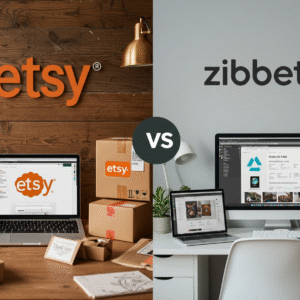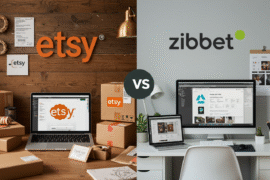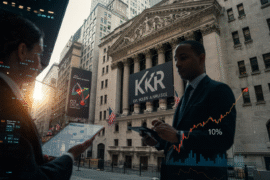This article may contain references to products or services from one or more of our advertisers or partners. We may receive compensation when you click on links to those products or services. Nonetheless, our opinions are our own.
- Starbucks Culture and Its Influence on Long-Term Investment Potential
- Corporate Identity as a Market Differentiator
- Employee-Centric Strategies That Strengthen Performance
- Customer Loyalty as a Revenue Engine
- Integrating Sustainability into Business Strategy
- Competitive Positioning in a Saturated Market
- Factors Investors Should Monitor
-
FAQs
- How does Starbucks’ internal culture impact its stock performance?
- Is Starbucks a viable option for ESG-focused investors?
- What competitive advantage does Starbucks have beyond its product?
- What risks should long-term investors be aware of?
- What are the growth prospects for Starbucks over the next decade?
- Conclusion
- Recommended Reads
Starbucks Culture and Its Influence on Long-Term Investment Potential
Behind every successful brand is a set of internal values that shape how the company operates. In the case of Starbucks, its corporate culture has proven to be more than just a branding exercise. it is a strategic asset with measurable financial implications. For investors seeking long-range opportunities in consumer-facing businesses, examining how Starbucks manages its workforce, interacts with communities, and embraces innovation reveals a model that continues to support shareholder confidence. This exploration of Starbucks’ internal environment offers insight into how cultural practices can directly support durable financial outcomes and competitive staying power.
Corporate Identity as a Market Differentiator
Starbucks has cultivated a distinctive identity that transcends coffee. While many quick-service brands compete on price or convenience, Starbucks focuses on creating a consistent, welcoming experience, one that fosters community and emotional connection. This identity is not accidental. It stems from deliberate practices centered on people: employees, customers, and local communities. Through consistent customer touchpoints, employee-centric policies, and responsible sourcing strategies, Starbucks has positioned itself as a premium brand with strong customer affinity. This brand positioning helps reduce price sensitivity and increase customer retention, two critical contributors to earnings resilience.
Employee-Centric Strategies That Strengthen Performance
Workplace culture is often dismissed as intangible, but for Starbucks, it has practical effects on daily operations and long-term value creation. The company invests in its workforce with benefits that go beyond industry norms: comprehensive healthcare, stock options for part-time staff, and opportunities for professional development. These practices improve employee morale, which directly impacts service quality, a vital component in a service-driven business. High engagement levels among staff are often reflected in better in-store experiences, increased repeat visits, and smoother operations.
Operational Outcomes of Employee Investment
| Practice | Resulting Business Effect |
|---|---|
| Professional development | Boosts employee retention and internal growth |
| Stock ownership programs | Aligns employee interests with shareholders |
| Health and wellness benefits | Reduces absenteeism and turnover |
By fostering a workplace where employees feel valued and motivated, Starbucks limits costly turnover and cultivates a frontline workforce that enhances customer satisfaction, both of which support long-term earnings stability.
Customer Loyalty as a Revenue Engine
Starbucks has successfully built a system that rewards customer loyalty while collecting data to personalize future experiences. The Starbucks Rewards program is central to this model. It not only incentivizes repeat purchases but also allows the company to tailor offerings based on consumer behavior. This type of ecosystem creates more than just transactional relationships; it fosters brand preference, even in crowded markets. Combined with innovations like mobile ordering, contactless payments, and app-based promotions, the company leverages technology to stay ahead of shifting consumer habits. Factors that contribute to this consistent customer engagement include
- Reliable product quality across locations
- Seasonal menu innovations that keep offerings fresh
- Digital convenience features that integrate with daily routines
The net effect is a loyal customer base that contributes to stable and recurring revenue, which is favorable for investors tracking long-term value generation.
Integrating Sustainability into Business Strategy
Environmental and ethical considerations are increasingly influencing investment decisions. Starbucks has adopted numerous practices that appeal to environmentally aware consumers and sustainability-focused investors. From ethically sourcing coffee beans to investing in greener packaging and water conservation, the company demonstrates a willingness to adapt to broader consumer and regulatory expectations. These sustainability initiatives not only align with shifting public sentiment but also mitigate long-term operational risk, particularly in global supply chains. By embedding environmental responsibility into its sourcing and production practices, Starbucks reinforces its brand while addressing investor concerns around ESG compliance.
Competitive Positioning in a Saturated Market
 Despite the growing number of specialty coffee and fast-casual competitors, Starbucks maintains a dominant position in the market. Its scale, operational sophistication, and emphasis on experience over price have helped the company weather market fluctuations and consumer shifts. A significant factor in this resilience is the company’s continued investment in technology and infrastructure. Initiatives like drive-thru expansions, digital payment systems, and AI-powered personalization have not only enhanced customer experience but also improved operational efficiency.
Despite the growing number of specialty coffee and fast-casual competitors, Starbucks maintains a dominant position in the market. Its scale, operational sophistication, and emphasis on experience over price have helped the company weather market fluctuations and consumer shifts. A significant factor in this resilience is the company’s continued investment in technology and infrastructure. Initiatives like drive-thru expansions, digital payment systems, and AI-powered personalization have not only enhanced customer experience but also improved operational efficiency.
Strategic Levers Supporting Long-Term Viability
| Strategy | Impact on Competitive Positioning |
|---|---|
| Technology and innovation | Enhances convenience and personalization |
| Community partnerships | Builds brand loyalty and public goodwill |
| Global brand consistency | Maintains quality perception across markets |
Together, these strategies form a well-integrated approach that differentiates Starbucks in a market where most players compete on speed or cost.
Factors Investors Should Monitor
While Starbucks’ culture supports long-term growth, investors should also pay close attention to potential challenges that could erode the company’s brand equity or profitability over time. These include:
- Labor relations: Unionization movements in U.S. locations could increase labor costs or disrupt operations.
- International performance: Maintaining consistency across diverse markets remains a challenge, especially as the company expands into emerging economies.
- ESG-related transparency: Continued scrutiny around environmental claims and social impact metrics requires Starbucks to maintain credibility in its disclosures.
Addressing these factors proactively will be critical for the company to maintain investor confidence.
FAQs
How does Starbucks’ internal culture impact its stock performance?
Positive employee experiences lead to better service, higher customer satisfaction, and stronger sales. These factors, when consistent, contribute to steady revenue growth and stock appreciation over time.
Is Starbucks a viable option for ESG-focused investors?
Yes. Starbucks demonstrates strong performance across environmental and social indicators, including ethical sourcing, waste reduction, and workforce development, elements frequently sought by ESG investors.
What competitive advantage does Starbucks have beyond its product?
Its culture-driven brand identity, combined with technological adoption and customer engagement strategies, sets Starbucks apart from competitors who rely heavily on pricing and promotions.
What risks should long-term investors be aware of?
Operational risks such as rising labor costs, supply chain vulnerabilities, and inconsistent international performance should be monitored. Additionally, public scrutiny over ESG claims could pose reputational risks.
What are the growth prospects for Starbucks over the next decade?
With continued investment in digital channels, global expansion, and cultural alignment with modern consumer values, Starbucks is positioned for steady, long-term growth if it manages emerging risks effectively.
Conclusion
Starbucks represents a compelling case of how organizational culture can reinforce brand strength and support durable financial performance. From employee engagement and digital innovation to sustainability and customer loyalty, the company’s approach integrates cultural values with operational strategy. For investors focused on long-term stability and value creation, Starbucks’ internal dynamics offer meaningful signals that extend beyond the balance sheet.

Reviewed and edited by Albert Fang.
See a typo or want to suggest an edit/revision to the content? Use the comment form below for feedback.
At FangWallet, we value editorial integrity and open collaboration in curating quality content for readers to enjoy. Much appreciated for the assist.
Did you like our article and find it insightful? We encourage sharing the article link with family and friends to benefit as well - better yet, sharing on social media. Thank you for the support! 🍉
Article Title: How Starbucks Culture Drives Long-Term Investment Growth
https://fangwallet.com/2025/06/17/starbucks-stock-performance/The FangWallet Promise
FangWallet is an editorially independent resource - founded on breaking down challenging financial concepts for anyone to understand since 2014. While we adhere to editorial integrity, note that this post may contain references to products from our partners.
The FangWallet promise is always to have your best interest in mind and be transparent and honest about the financial picture.
Become an Insider

Subscribe to get a free daily budget planner printable to help get your money on track!
Make passive money the right way. No spam.
Editorial Disclaimer: The editorial content on this page is not provided by any of the companies mentioned. The opinions expressed here are the author's alone.
The content of this website is for informational purposes only and does not represent investment advice, or an offer or solicitation to buy or sell any security, investment, or product. Investors are encouraged to do their own due diligence, and, if necessary, consult professional advising before making any investment decisions. Investing involves a high degree of risk, and financial losses may occur including the potential loss of principal.
Source Citation References:
+ Inspo
There are no additional citations or references to note for this article at this time.












































